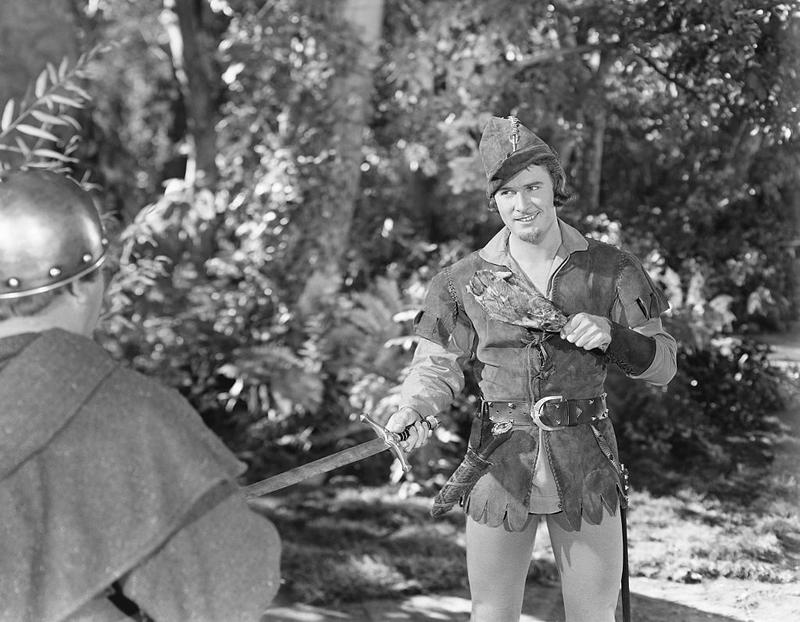The Green Feather Movement: Hoosiers, Robin Hood, and Communism
By | October 24, 2022

In 1953, during the height of the McCarthy Era’s Red Scare, paranoid ran deep. Anything even remotely connected to Communism was scrutinized, debated, and banned. Hollywood actors, politicians, and writers were often unjustly accused of being closet Communists and blackballed. Movies were likewise attacked, as were books and other works of literature. When one Indiana educator sought to ban stories of Robin Hood from school curriculum on the grounds that the legendary character demonstrated Communist tendencies, college students launched a clever protest. Here is the story of the Green Feather Movement.
McCarthyism
In the early 1950s, Senator Joseph McCarthy initiated a series of hearings to expose what he claimed was the infiltration of Communism into the United States government and the American way of life. He and his committee ran investigations that bordered on witch hunts and smear campaigns. Paranoia got out of control. Many people had their reputations and careers ruined by false accusations because McCarthy was eager to show the country that he was cleaning up the Communism menace.
The Indiana Textbook Commission
On November 13, 1953, a member of the Indiana Textbook Commission, a woman named Ada White, claimed that children’s books containing the story of Robin Hood, the English folk hero outlaw, should be banned from public schools in Indiana. She pointed out that the character promoted Communist beliefs because his mantra was to steal money from the rich and distribute it to the poor, which is one of the basic tenements of Socialist Communism.

Indiana University Students
When word of Ada White’s ban on Robin Hood got out, students at Indiana University in Bloomington were aghast. Labeling the beloved folklore character a Communist was, the Hoosier students believed, taking the Red Scare too far. Several of them organized a form of nonviolent protest to spread the word about the ridiculousness censoring Robin Hood and to show their support for the legendary outlaw bandit.
Hoosiers and Chicken Feathers
Five IU students – Bernard Bray, Edwin Napier, Mary Dawson, Jeanine Carter, and Blas Davis – visited a local chicken farm. There, they convinced the farmer to sell them six large bags of white chicken feathers. They took the sacks of feathers to one of the student’s basement and spent all night dying the white feathers green. They chose the color green because, according to the legends, Robin Hood wore a green feather in his hat.
The Green Feathers Movement
The Hoosier students, calling themselves the “Merry Outlaws”, took the green feathers to campus. There, they plastered the feathers around campus, pinning them to every bulletin board, placing them on library shelves, and leaving them in public places. They also made homemade protest buttons and affixed the green feathers to them. The buttons included various protest slogans that informed others about their position on the Robin Hood censorship issue and of McCarthyism in general.

Response to the Protest
Indiana University’s student newspaper, The Indiana Daily Student, covered the Green Feather Movement, as it became known, and was generally supportive of the students’ cause. Among the staff and faculty of IU, however, the response to the protest was mixed. Some professors wholeheartedly approved of the protest while others refused to go on record with their opinion. During this time, the university was quite conservative. It was mandatory for freshmen and sophomores to participate in ROTC when this protest was going on and about have of all Americans supported Senator McCarthy and his anti-Communist agenda. The local newspaper, The Bloomington Herald Telephone, stopped just short of calling the students in the Green Feather Movement “radical extremists”. The newspaper did refer to them as “long-hairs” and “dupes”. George Craig, the governor of Indiana, noted that “Communists have gone to work twisting the meaning of the Robin Hood legend.”
The FBI arrived on campus and thoroughly investigated the students behind the Green Feather Movement. Faculty members in IU’s law and psychology departments gave their support to the Green Feather Movement. They even arranged for the local chapter of the American Civil Liberties Union to get involved. By May of 1954, as the academic year was winding down, the members of the Green Feather Movement petitioned Indiana University for official recognition as a club. But then it was finals week and the end of the school year.
A Short-Lived Protest
A number of things happened over the summer. First, Indiana University officials voted to deny the Merry Outlaws from becoming a university-recognized club. Second, Ada White’s push to ban Robin Hood from Indiana public schools was shot down. Lastly, between April and June of 1954, the Army-McCarthy hearings were broadcast on television. In these hearings, the U.S. Senate’s Subcommittee on Investigations took a critical look at Senator McCarthy and the accusations he and his committee leveled at the Army. The public watching the hearings on TV saw evidence of McCarthy’s aggressive tactics and listened to Joseph Welch, the Army counsel, confront the Senator about his witch hunt. By the conclusion of the hearings, McCarty’s approval rating had plummeted. McCarthyism was over.
That Fall, then students returned to Indiana University, the cause they were fighting so hard for had been resolved. The Merry Outlaws did not push back on the university’s decision to deny their official club status. There was no longer a need for the Green Feather Movement. The protest, however, demonstrated the power of student protests. Variations on the Green Feather Movement spread to other colleges and universities around the country with other non-Hoosier students working to end other forms of censorship.